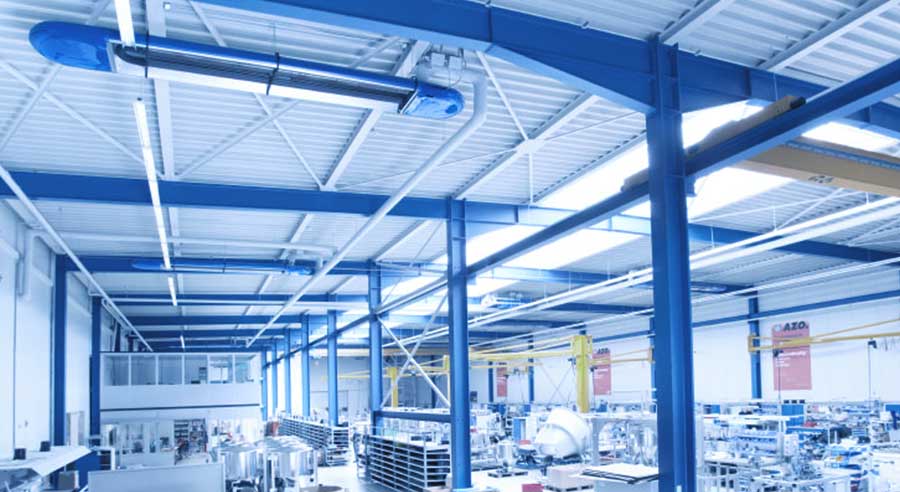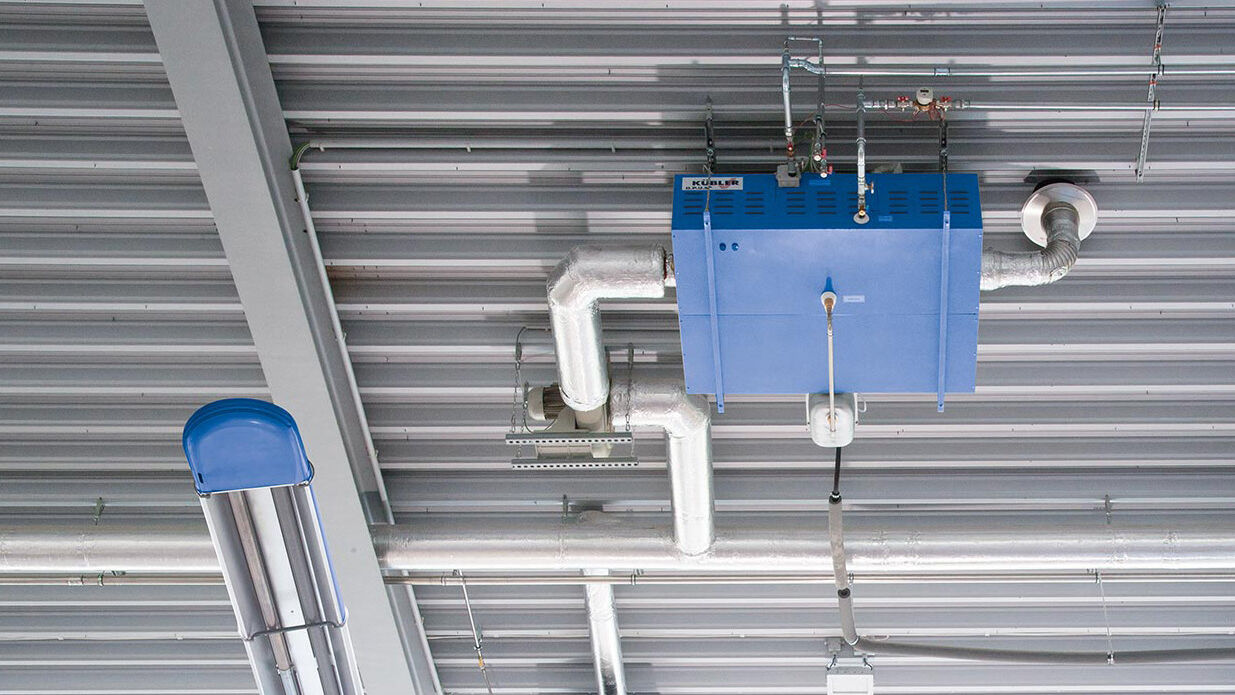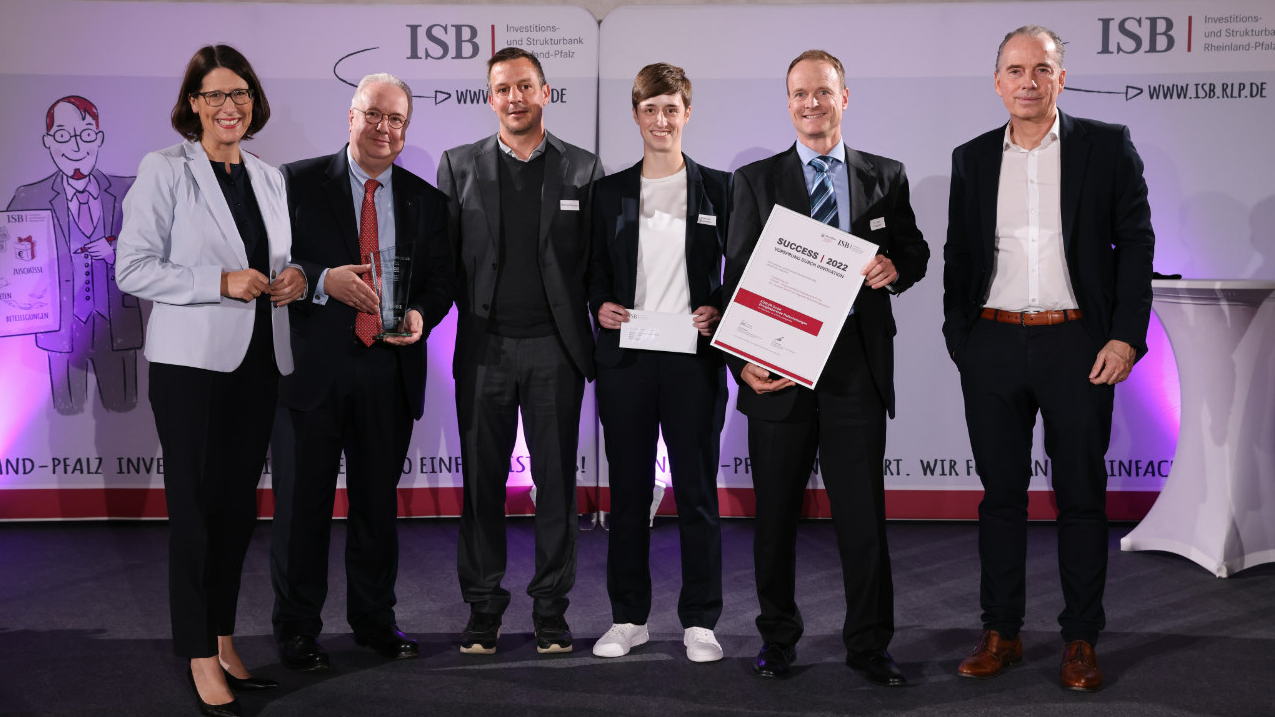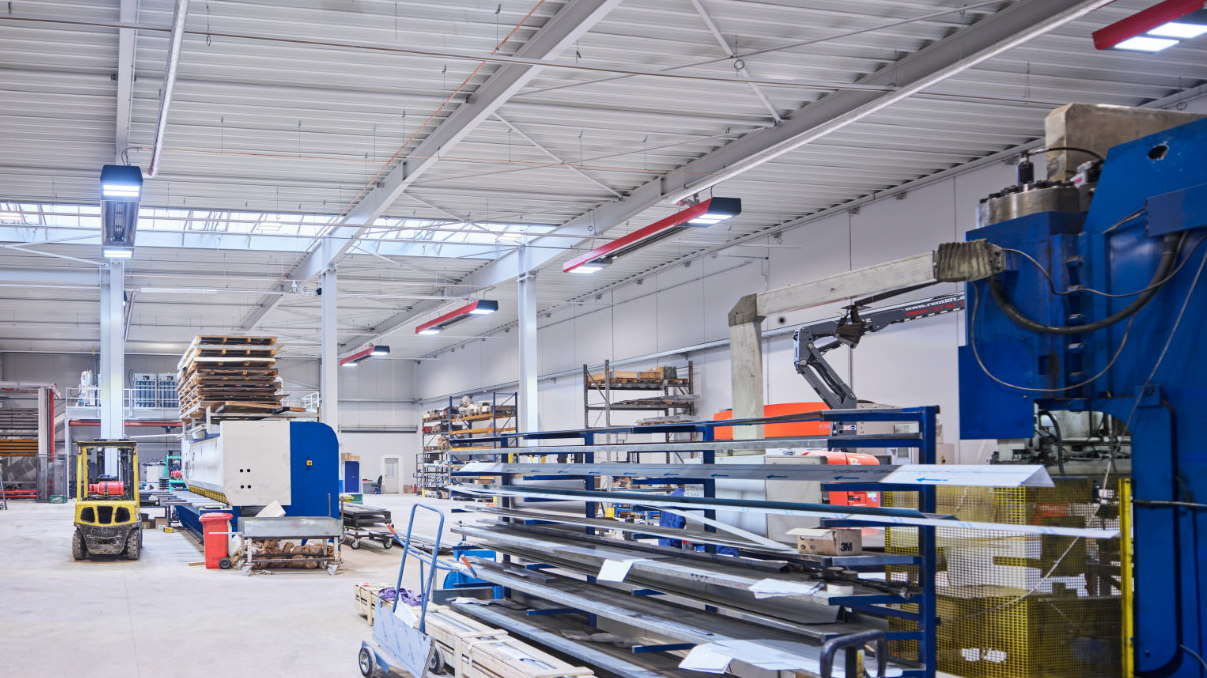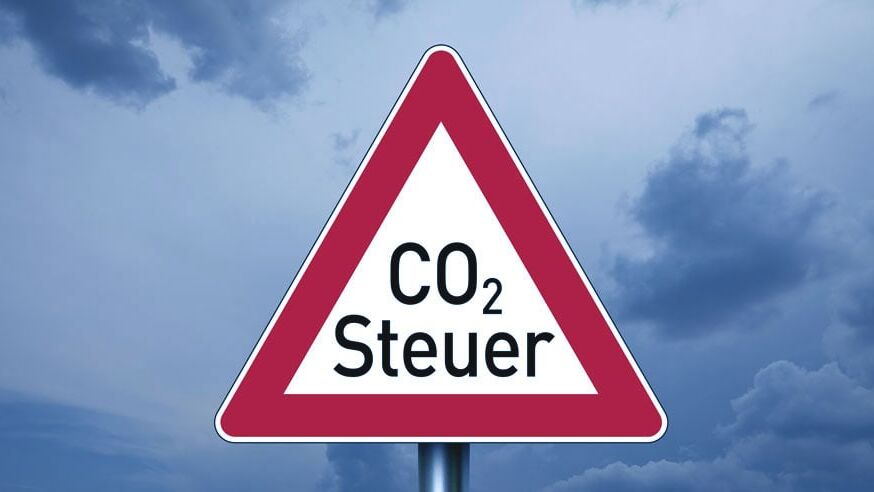Heating industrial and event halls economically and flexibly: radiant heaters are ideally suited for this job. An overview of function, types and possible applications.
Everyone is familiar with classic heaters that heat indoor air by convection – white panel radiators with internal heat baffles that have provided indirect heat to millions of homes and offices via hot water and air for decades. Far less well known: Radiant heaters, also called heat wave heaters. Their operating principle differs fundamentally from that of classic radiators. Water and air play no role in heat transfer.
Instead, radiant heaters transmit electromagnetic infrared heat radiation directly to floors, walls, objects and people. A principle similar to solar radiation. Even when the ambient temperature is cool, the sensation is pleasantly warm. And users save energy. But how do radiant heaters actually work? And what types are there?
Radiant heaters: What distinguishes a light radiator
Radiant heaters do not work with a transfer medium such as water, which is heated centrally, but generate heating energy directly in or on a radiating component. Here the heaters are divided into two groups: Light radiators and dark radiators. In light radiators, a fuel gas mixed with the combustion air burns on a high-temperature-resistant, perforated ceramic plate. The burner surface heats up to temperatures between 750 °C and 950 °C. The plate glows visibly. The plate glows visibly – hence the name bright burner – and emits infrared radiation to the surroundings. As soon as the radiation hits solid bodies, it is transformed into heat. The exhaust gases produced by this open combustion usually escape into the open air with the room air. Sufficient ventilation is correspondingly important, realized for example with ceiling fans.
Characteristics of dark radiators
The second type of radiant heaters: Dark radiators, today usually called infrared radiators. They also belong to the decentralized hall heating systems, which combine heat generation and heat transfer in one device. It is true that their physical principle is identical to that of the light radiators. However, their mode of operation is different.
Dark radiators do not work with open combustion, but with pipes, usually in a U-shape. A combustion gas, usually natural gas, flows through these tubes at a temperature of up to 800 °C – a suction blower at the end of the tube generates the vacuum needed to transport the combustion gas. A burner burns the natural gas. The average surface temperature of 250 °C to 500 °C is approximately the same along the entire length of the pipe. A reflector finally directs the infrared radiation from the tubes into the heating area.
Why the name dark radiator is outdated from a technical point of view
In contrast to light radiators, the term dark radiator used to refer to a non-glowing heating surface. But today, in the high-performance class of dark radiators, there are also devices with glowing tubes. Why then do they not belong to the light radiators? Because they do not work with an open, but with a closed combustion. Therefore, the name infrared radiator seems more appropriate.
The great advantage of closed combustion is that users can discharge exhaust gases through pipes in a controlled manner. And if desired, the residual heat can be passed on to a heat exchanger, e.g. to heat offices via a classic hydraulic heating system.
By the way, a small digression: It doesn’t always have to be natural gas. Electric radiators are a special form of radiant heating. They do not rely on the combustion of a fuel, but on a current flow in an electric resistance. However, electric radiators do not usually play a role in heating hall buildings – they are more likely to be used for baby changing tables or for heating benches and tables in beer gardens.
This is the difference between radiant ceiling panels
Radiant ceiling panels also work with thermal radiation – heating elements in the form of profiled strips of sheet steel with welded-in tubes. Hot water flows through the tubes, tempering the radiant surfaces so that they emit thermal radiation. Radiant ceiling panels can also heat large halls in an energy-efficient manner. Because of their low temperature, radiant ceiling panels require very large areas on the ceilings and therefore a relatively large amount of space. In addition, as an activator, hot water is a fairly inert medium. Temperature changes and adjustments of the heating operation to a dynamic daily routine can therefore not be realized as quickly as with gas-powered radiant heating systems.
Radiant heaters are predestined for use in industrial halls.
Why? Because halls with ceiling heights of several meters have a gigantic volume. And only a small part of about 20 percent is the usable area – usually 2.5 meters above the floor. The problem is that it is difficult to heat this area efficiently using conventional convection. This is because warm air does not stay in one place, but always rises – to where no one needs it. A physical principle that is incorruptible and causes hall operators a great deal of heat loss. In addition, warm air currents cause dust turbulence and unpleasant drafts in halls.
Negative aspects that speak in favor of decentralized infrared hall heating systems.
As already mentioned, they enable the targeted heating of the desired area of a hall. Thus, where people work, it is pleasantly warm, while in the upper layers of air it remains cool. Even when doors and gates open and close frequently. This is not the only energy-saving advantage.
The heat from infrared heaters is also available immediately, since no reaction-carrying detour via heat-conducting media such as water and air is necessary. This means that even rooms that normally remain cold can be heated efficiently for short periods of use. For example, storage rooms that employees rarely enter. Since no drafts are generated during heating, dust pollution is also reduced. This makes infrared systems ideal for allergy sufferers and a generally more pleasant and healthier hall atmosphere.
Save up to 70 percent energy with infrared heaters
However, infrared heaters not only make it possible to heat cold rooms quickly and at short notice. Operators can also divide huge hall spaces into several heating zones. They don’t have to set a standard temperature, but can, for example, heat less near the waste heat from machines and equipment, and more in the storage area. This way, all employees get the perfect feel-good temperature. Without wasting energy.
If users also network the heaters with intelligent controls and analysis software, they can continuously monitor and optimize all parameters of heating operation. The bottom line is enormous cost savings. Compared to conventional convection systems, hall operators generally save between 30 and 50 percent, and depending on the project, up to 70 percent energy.
St. Pauli: Fish auction hall warms guests with infrared heaters and saves around 50 percent on energy costs
Radiant heaters are not only used in industrial halls, however. Word of their advantages has long since spread to the event industry. The heating systems can now also be found at concerts, art exhibitions or corporate events that take place in unusual locations – for example, in old fish factories or heating plants. For example, in the old fish auction hall at the St. Pauli fish market.
Infrared heaters from KÜBLER provide pleasant warmth on the stage as well as at tables, benches and food stalls in the 103-meter-long and 23-meter-wide hall, which is eleven meters high at the dome. In contrast, the thousands of cubic meters of air above the usage area remain cool. Without bothering anyone. On the contrary. Operators save up to 50 percent in energy costs compared to classic warm-air heating systems.
These articles might also interest you
Let's take the next step together
Every hall is different. With more than 30 years of company history, there is hardly a requirement that is unknown to us. Together with our customers, we have implemented the appropriate solutions. If you are ready to implement economically proven heating concepts for your hall, then you have come to the right place.




